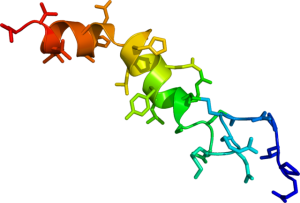Narcolepsy is a chronic sleep disorder affecting wakefulness and sleep control. Patients suffering from narcolepsy experience severe episodes of daytime sleepiness, hallucinations, sleep paralysis and also cataplexy (loss of control of muscles). It roughly affects a person in 2,000 people and can remain stable without any treatment. Cataplexy is a recognized cause pertinent to this disorder due to the deficiency of orexin.
How common is Narcolepsy?
Page Contents
The limits between wakefulness and sleep are blurry which causes the patients to feel fatigued and sleepy in the daytime. They experience hallucinations, dreams even paralysis while waking up or falling asleep during the day with interrupted night sleep. In a healthy sleep cycle, there are several stages, and it takes a minimum of 90 minutes to get REM (rapid eye movement) sleep. However, in this disorder, people sleep immediately and get REM. Child or adults both can suffer from this disease. There is no known treatment, but specific changes in lifestyle can improve the condition.
Causes
The definite cause of Narcolepsy is yet not clear, but scientists have made progression in recognizing the elements allied.
- Neurotransmitters: People suffering from narcolepsy have low levels of hypocretin (also known as orexin) which is an essential chemical to regulate wakefulness. It has been observed that patients produce 90-95% less hypocretin than the healthy However, the reason behind the less production is yet unknown, but sometimes it is assumed as an autoimmune reaction.
- Family History: This is not a hereditary problem, only 8 to 10% state that their relatives suffer from this disorder.
- Injury: In rare cases it has been found that the disease has been a result of brain injury or tumor growth in REM areas.
Symptoms
- Sleep paralysis: Ineptness to speak or move while waking up or falling asleep despite conscious of the surroundings. It lasts for a limited duration with no permanent effects.
- Excessive Daytime Sleepiness (EDS): Described by episodes of sleeping without indication, chronic sleepiness and sleep attacks for few seconds. It generates a feeling of mental cloudiness, insufficient concentration and energy, extreme exhaustion and mood swings. It occurs after a sound sleep, the night
- Improper Nocturnal Sleep: Patients with Narcolepsy have broken sleep, especially during the night. Waking up five to six times due to sleep talking, vivid dreaming, and leg movements are ordinary. Sufferers face difficulty in staying awake during the day and sleeping at night.
- Cataplexy: Similar to sleep paralysis, it occurs anytime through the waking period and gets stimulated by emotions like anger, fear, stress, humor, and It has different levels of seriousness like drooping eyelids, muscle weakness, complete physical fall or inability to speak or move. During this attack, patients are conscious, but not able to regulate.
- Hallucination: Patients experience illusions while they are awake (hypnopompic) or while sleeping (hypnogogic) which is frightening and explicit.
Diagnosis
Diagnosis can be done based on the symptoms of Narcolepsy, but for a detailed check up one will need to get the specific test done in a sleep clinic.
- Polysomnogram (PSG): Nocturnal sleep study in which sufferers are wired up to equipment which records brain activity, blood pressure, eye movements, heart rate, body movements, oxygen levels, etc. It helps to know about the abnormalities and other sleep disorders causing symptoms.
- Multiple Sleep Latency Test (MSLT): It is a sleep study conducted during the day to evaluate tendency of sleepiness, swiftness with which one falls asleep and the stages he/she enter. Experts monitor the brain activity along with the eye, and body movements.
Treatments
There is no proper treatment for this disorder, but with appropriate diagnosis symptoms can be treated. However, cataplexy cannot be transposed, it remains throughout the life, but with certain habits, it can be controlled.
- Stimulants: Drugs that energize the nervous system and some amphetamine medicines are common. These are not addictive but have some side effects like nausea, headache, irritability, shakiness, nervousness, nocturnal sleep disruption and heart palpitations.
- Sodium Oxybate: Strong sedative to reduce symptoms of EDS and cataplexy. However, it has severe safety concerns, and its dispensation is also restricted. It includes side effects like enuresis (bedwetting), and nausea worsening conditions of sleepwalking. Consumption of alcohol and other medicines can lead to breathing problems, coma, or even death.
- Antidepressants: Selective serotonin inhibitors and norepinephrine reuptake inhibitors are used to repress REM sleep, hallucination, sleep paralysis, etc. Antidepressants have fewer side effects compared to stimulants but have some adverse effects like high blood pressure, digestive problems, etc.
Home remedies & Lifestyle
- Keep an un-fluctuating sleeping schedule
- Take Short naps every day
- Avoid alcoholic beverages and caffeine (2-4 hours before bedtime)
- Proper Exercise (Morning exercise followed by activity 4-5 hours before sleep improves sleep quality)
- Relaxing time that includes a relaxing bath or reading book enhances nocturnal sleep
- Support group (a condition known by the co-workers, teachers, and employers can help the situation by cooperating)
- Stop any activity if condition worsens, as it can be life-threatening
Preventing Tips
- Minimize consumption of influenza vaccines
- Avoid excessive activities
- Get proper sleep
- Sleep in an appropriate position
- Minimize disclosure to emotional environments

